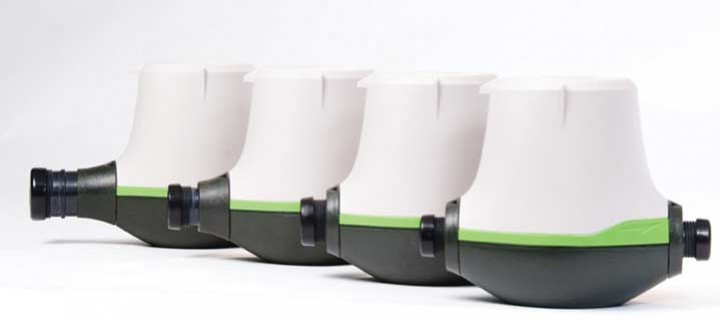What You Need to Know about Water Meters
- Home
- Team EJP Blog
- What You Need to Know about Water Meters
- Nov 4, 2014 8:00:00 AM
- Everett J. Prescott

You probably don't spend much time thinking about your water meter. Most of us don't. However, knowing where to find your meter and how to read it can help you spot a leak before it costs you unnecessary money on your water and sewer bills and wastes precious water resources.
What your water meter does
Like a gas or electric meter, your water meter measures the amount of water your household uses. Most water meters are located near where the main water supply line enters the house. They usually are placed on the exterior of your home, but it may be located inside, especially if you live in a cold climate. Northern states have meters located in the basement.
What you need to know about your water meter
It's a good idea to keep an eye on your water meter. Since many communities bill consumers for their water usage on a quarterly basis, an undetected leak can rack up quite a bill before you notice the increased usage on your billing statement. Not all water leaks are visible to the eye. You could have an undetected leak behind a wall or in a crawl space. This potential leak is not only costing you money for wasted water, but can also be causing water damage to your home. By monitoring your water meter regularly, you can identify such a problem early and take steps to stop the problem before it becomes costly. Monitoring your water meter however, requires the ability to read it correctly.
How to read your water meter
 Most of the world measures water usage in gallons, but in the northeast the usage is usually measured in cubic feet. (One cubic foot of water equals 7.48 gallons.) The face of your meter looks something like a car's odometer, and most water meters either have a dial or a digital display. To get your current usage, read the meter and write down the meter reading, then the next day do the same thing and subtract the numbers to find your daily usage. You can also chart your usage at more regular intervals to help you control your water usage. This is especially helpful in the summertime when watering lawns and flowerbeds can cause a dramatic spike in your water usage.
Most of the world measures water usage in gallons, but in the northeast the usage is usually measured in cubic feet. (One cubic foot of water equals 7.48 gallons.) The face of your meter looks something like a car's odometer, and most water meters either have a dial or a digital display. To get your current usage, read the meter and write down the meter reading, then the next day do the same thing and subtract the numbers to find your daily usage. You can also chart your usage at more regular intervals to help you control your water usage. This is especially helpful in the summertime when watering lawns and flowerbeds can cause a dramatic spike in your water usage.
How to check for a leak
Turn off all of the taps and water appliances in the house. Then, jot down the reading on the meter. Wait around 30 to 45 minutes. Read the meter again. If the level has moved, the odds are good that you have water leaking somewhere in the house.
If your meter indicates a leak, the most likely culprit is a toilet that is running constantly. A faulty flapper on the toilet can cost you $100 or more a month if it's allowed to run undetected. Other places to look for a leak include the base of your water heater, faucets with faulty washers and even your ice maker (if it fails to shut off as it's supposed to do.) The issue could also be a leaking underground pipe. Such leaks are often distinguishable by a patch of green that is noticeably greener that the rest of the lawn. For a leak behind the wall or in a crawl space, look for discolored drywall or ceiling tile.
If you suspect a leak, call your utility and have them work with you to find it. A leak can cost both parties money!
Knowing how to find and how to read your water meter puts you and your family more in control of your water usage. If you've never considered your water meter, make time to locate it today.
Get The iPERL Water Meter Guide

This guide will help you better understand the full capabilities of the water management system that offers unparalleled low flow accuracy with high flow durability. Get the guide today, it’s FREE! Here are just a few of the topics covered;
- Description of Features
- Display Chart
- Dimensions & Net Weights
- Specifications
- Head loss Curves









